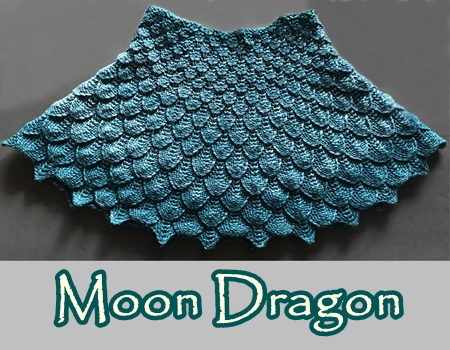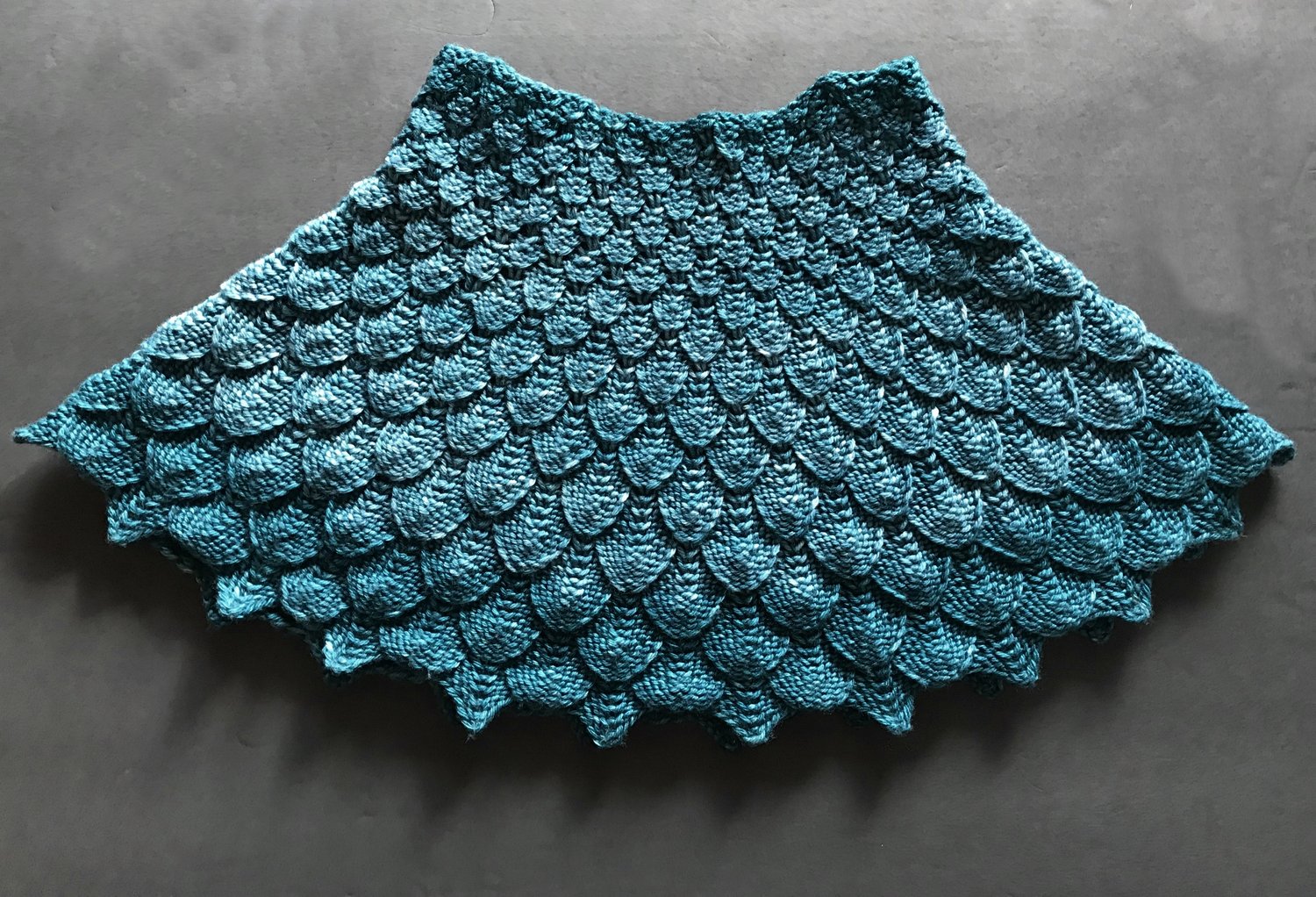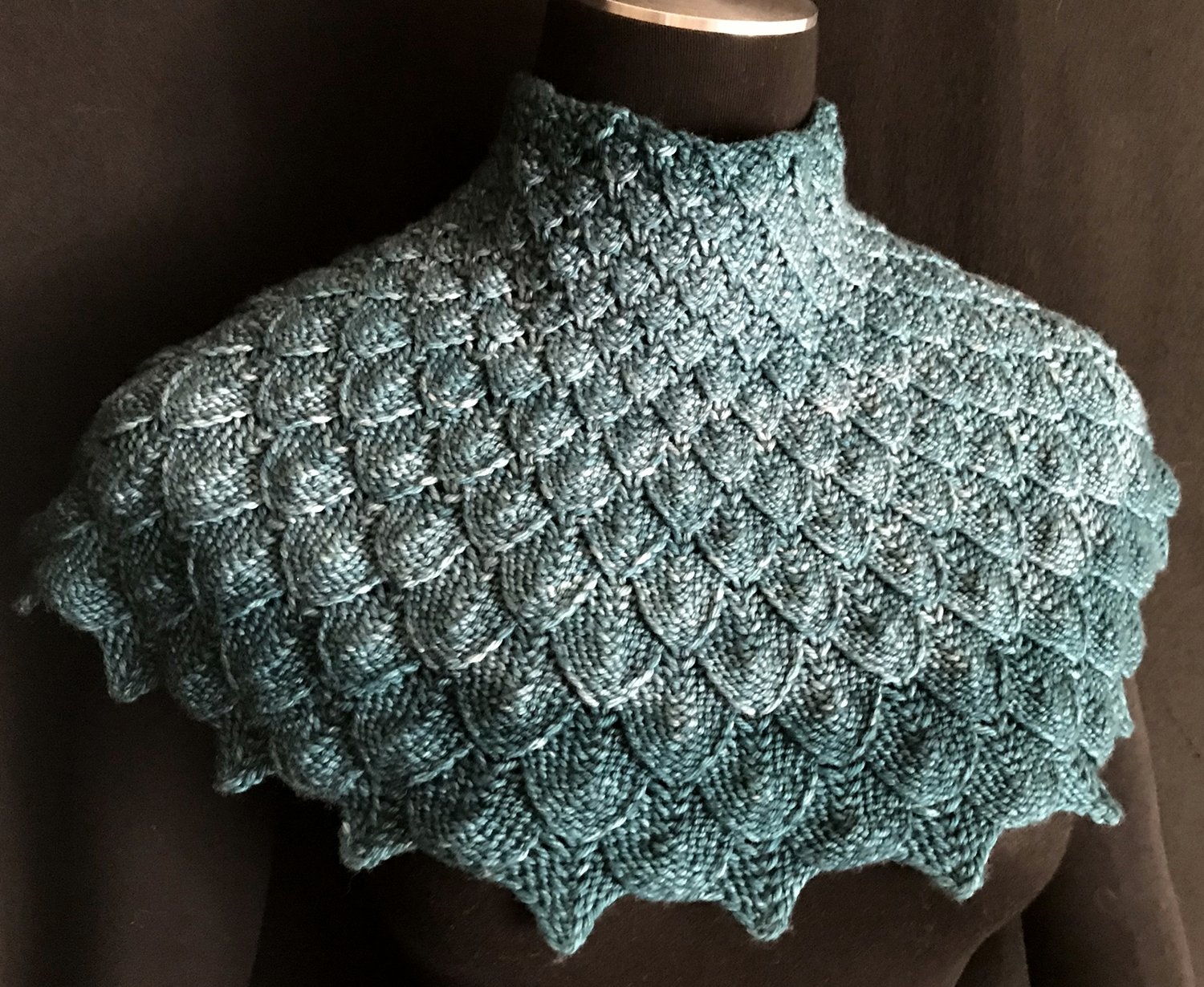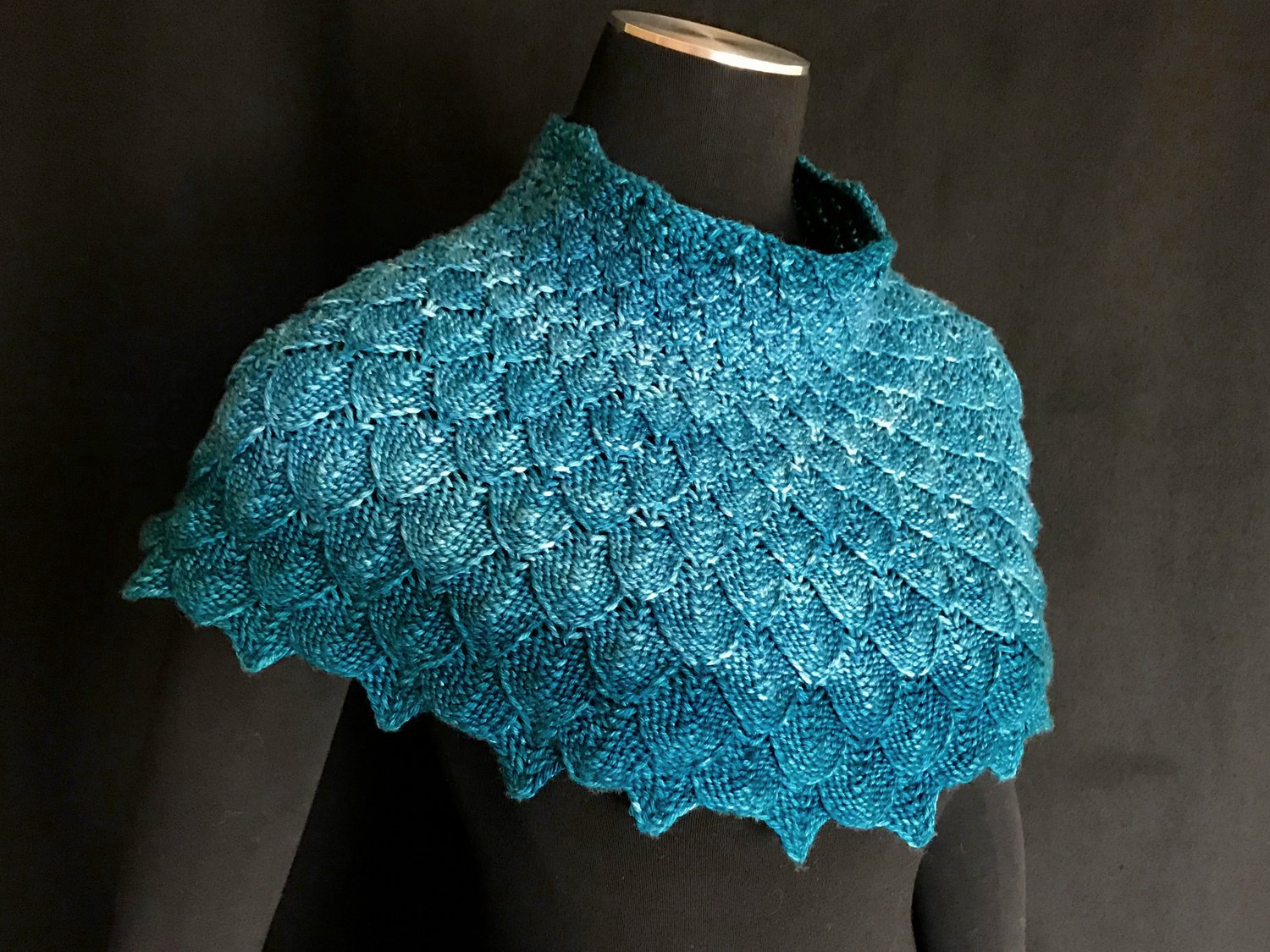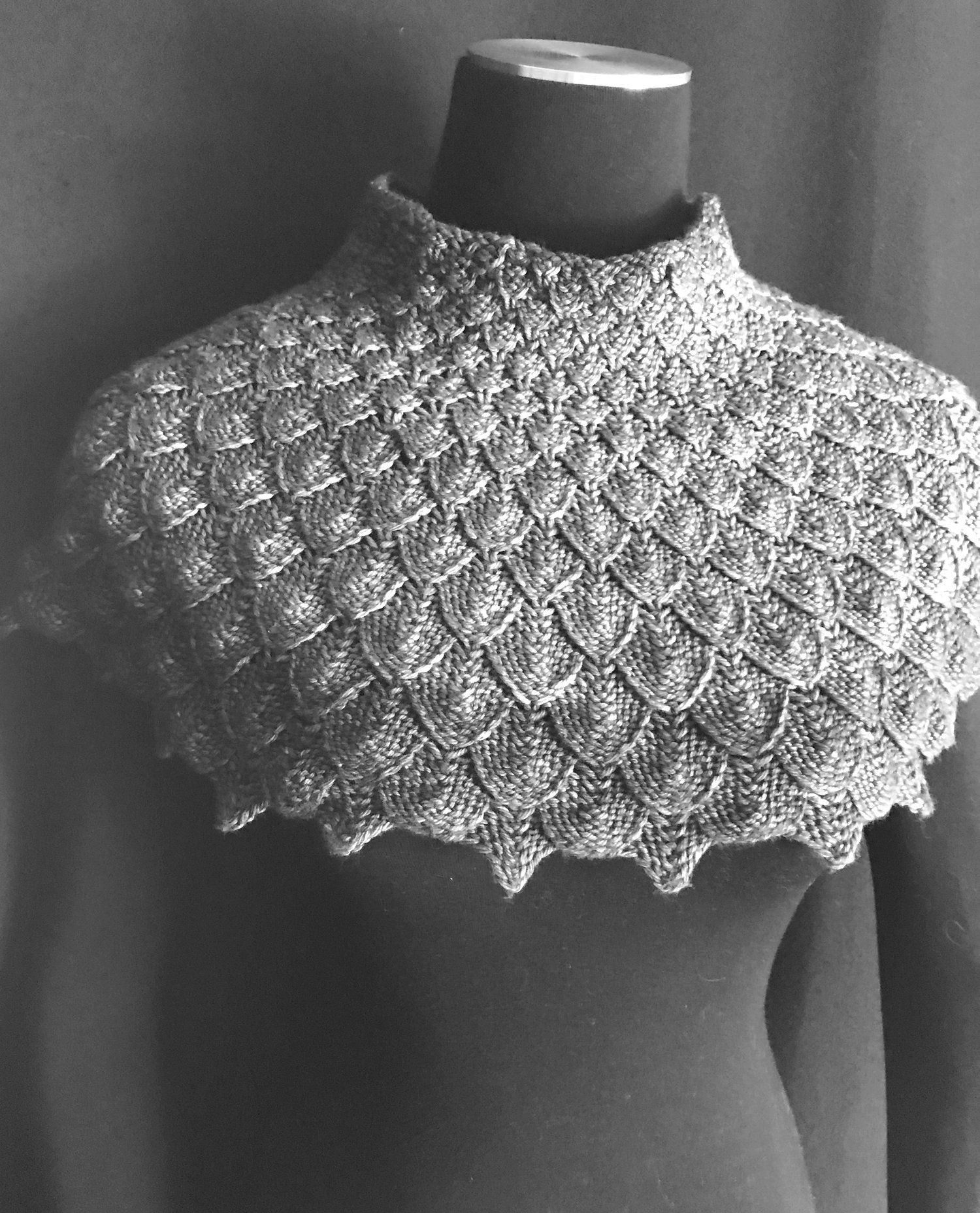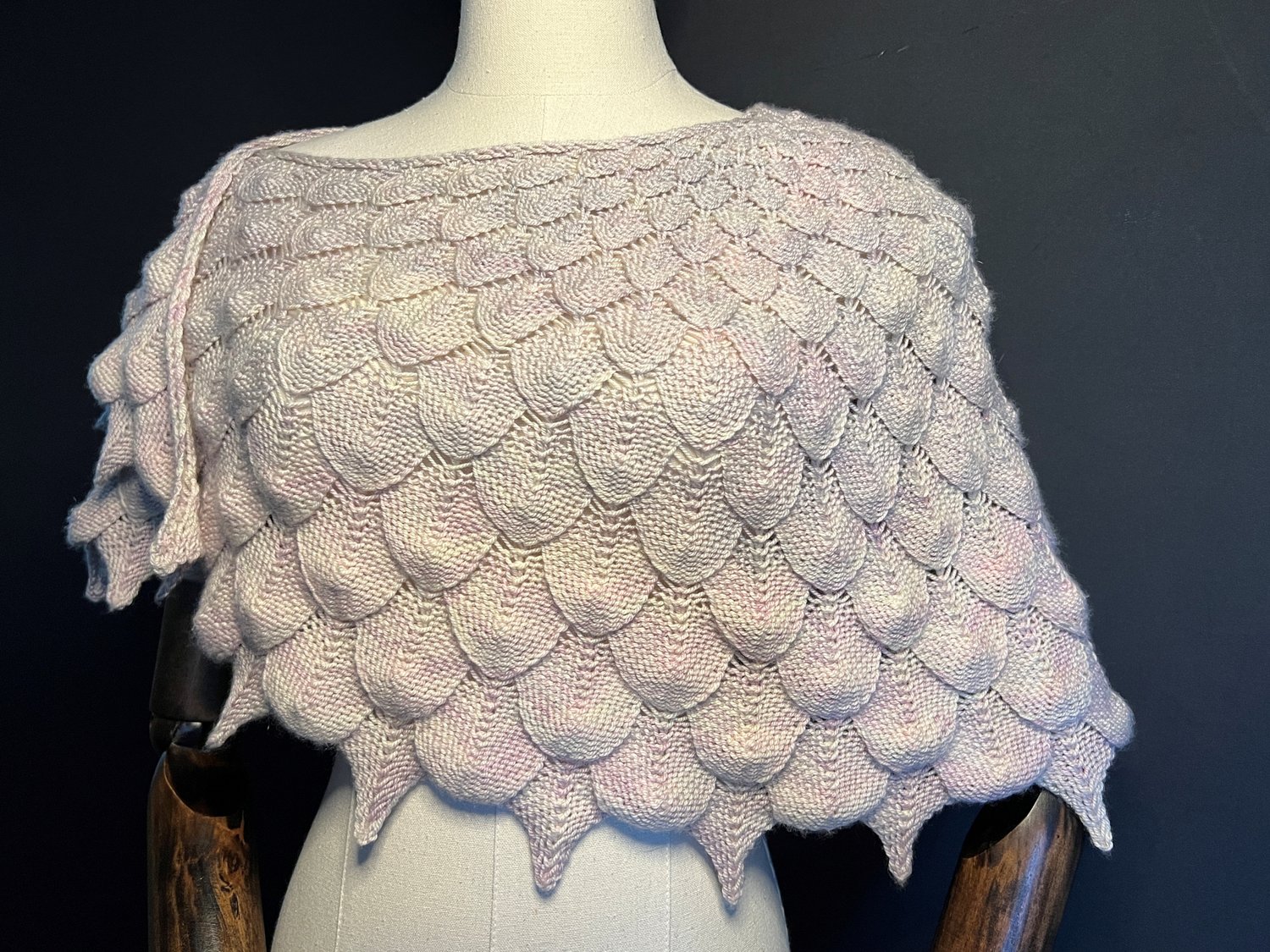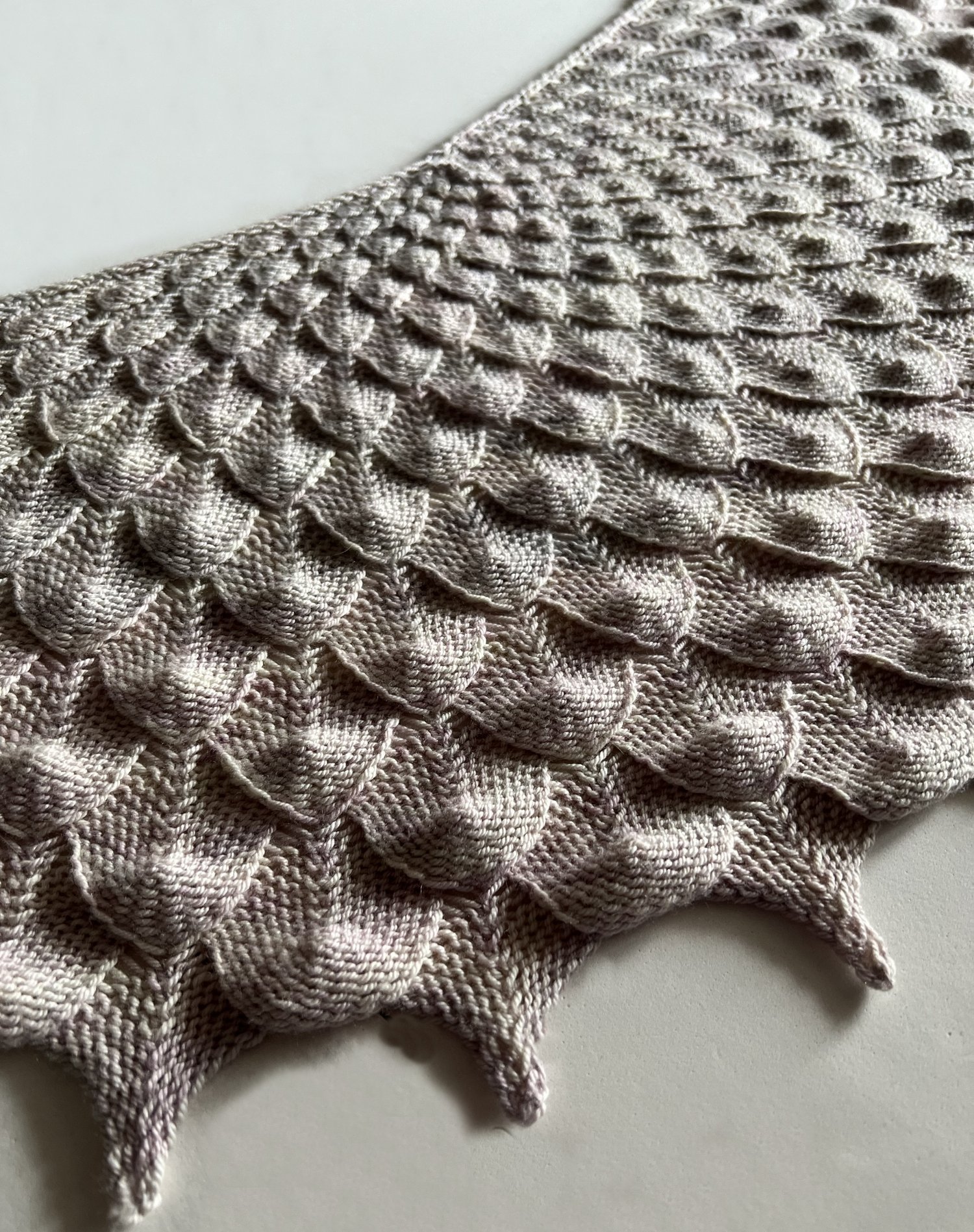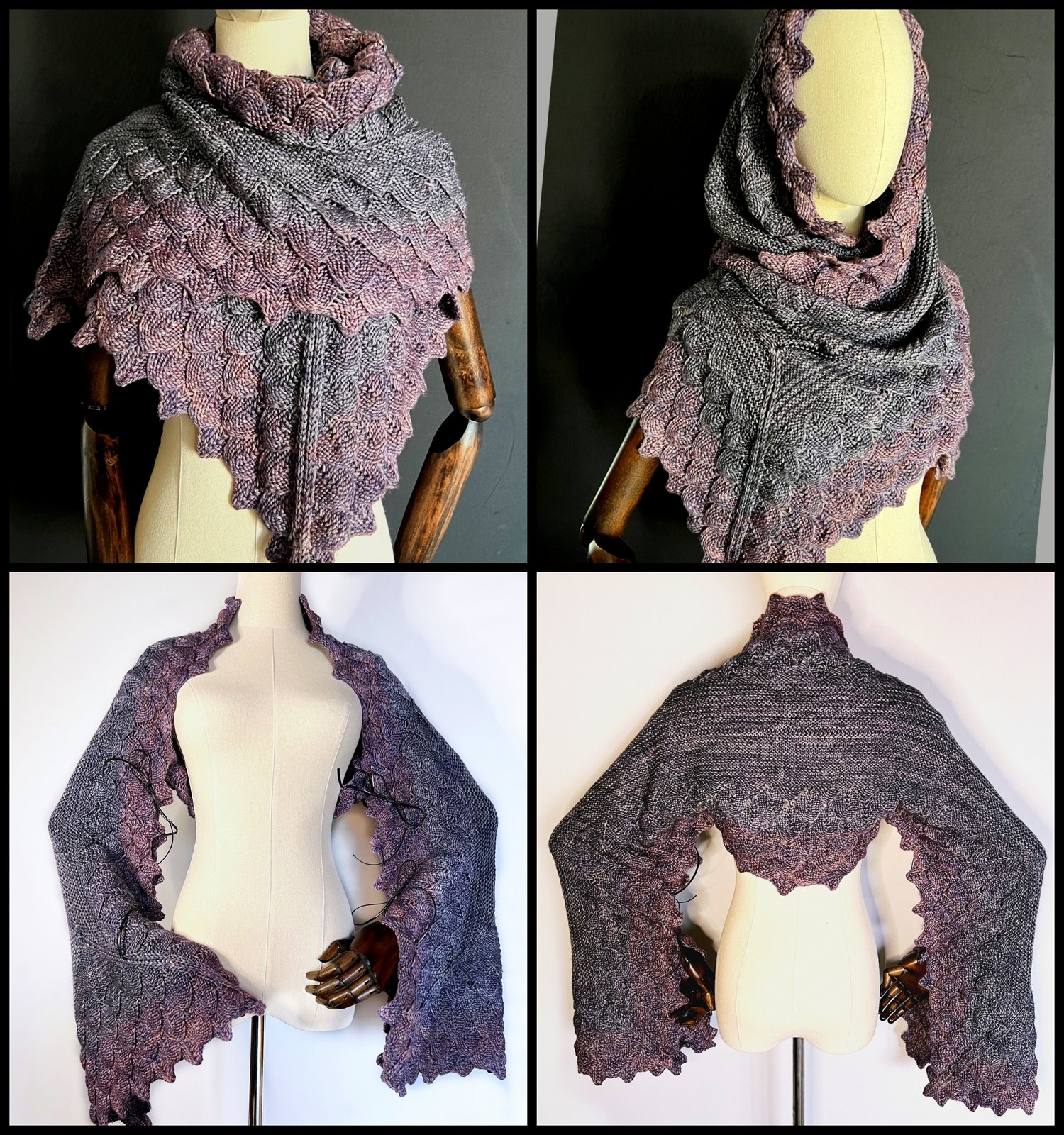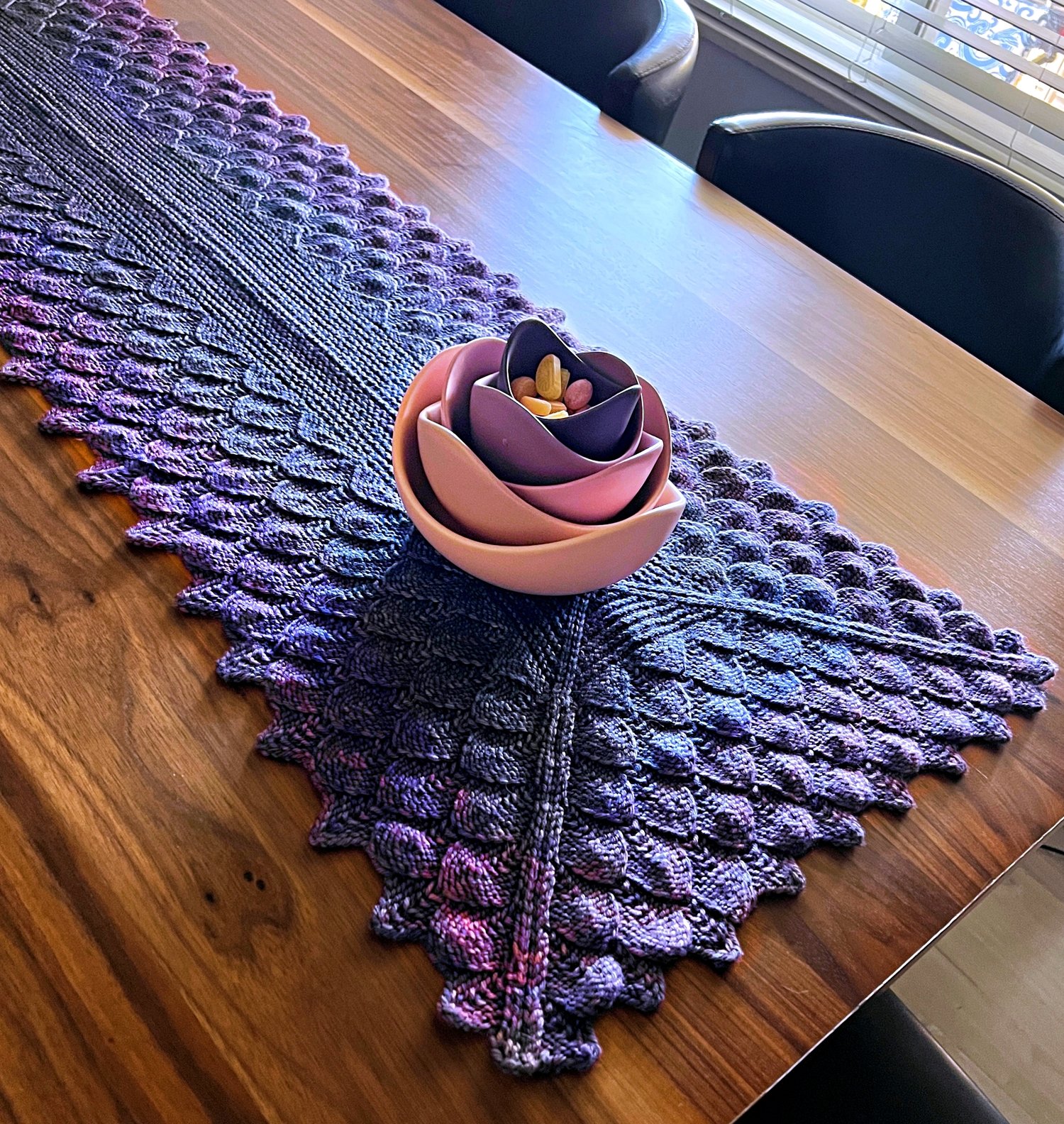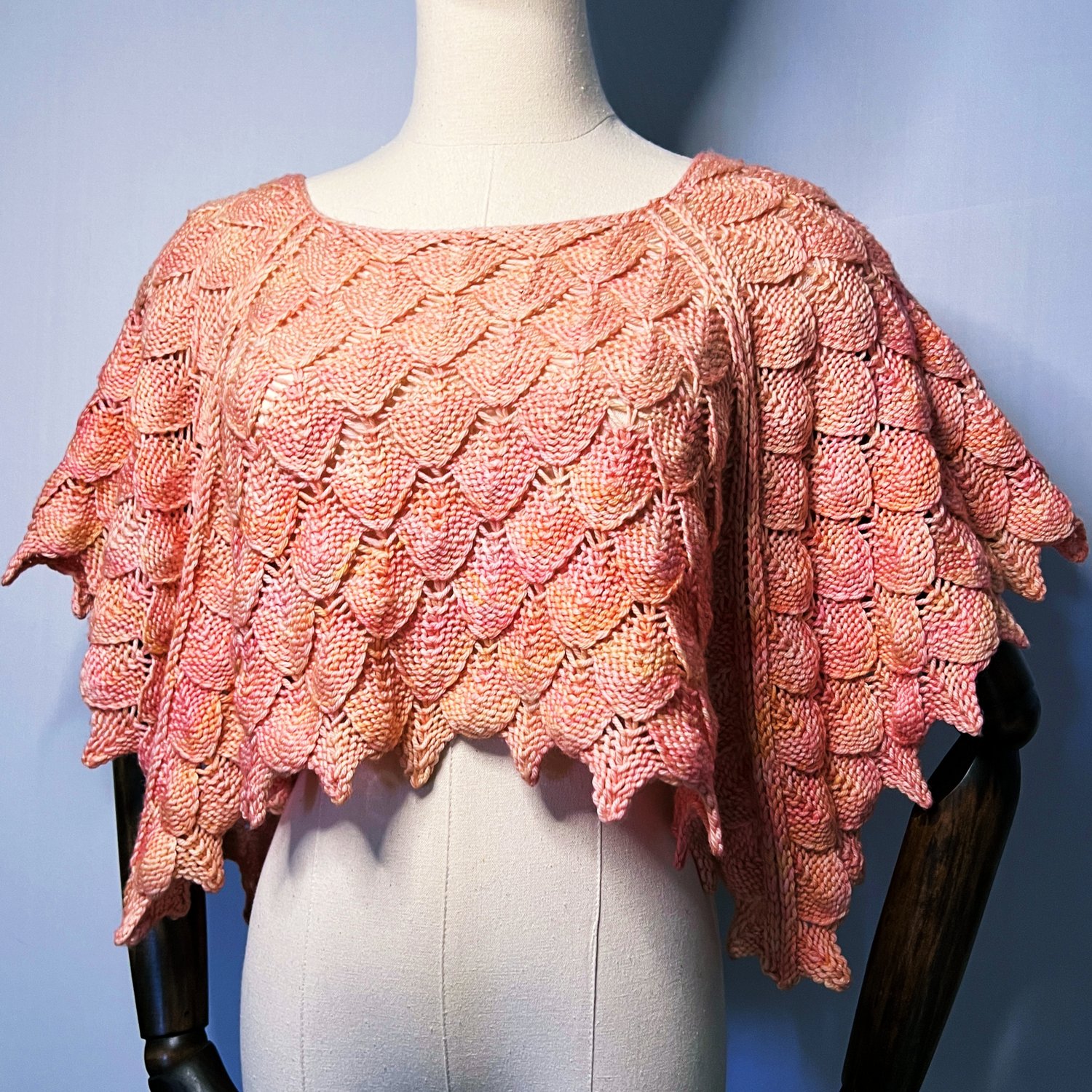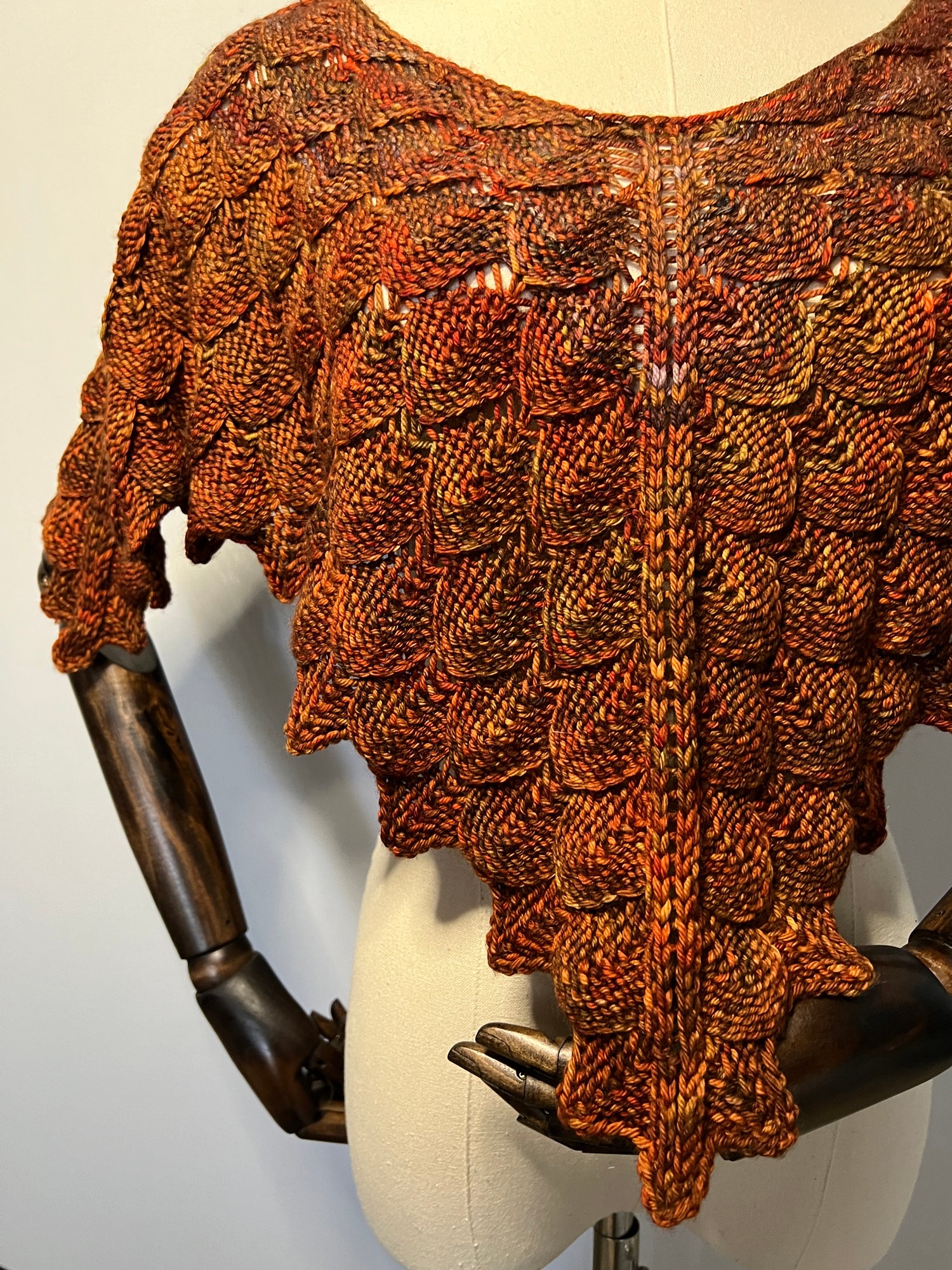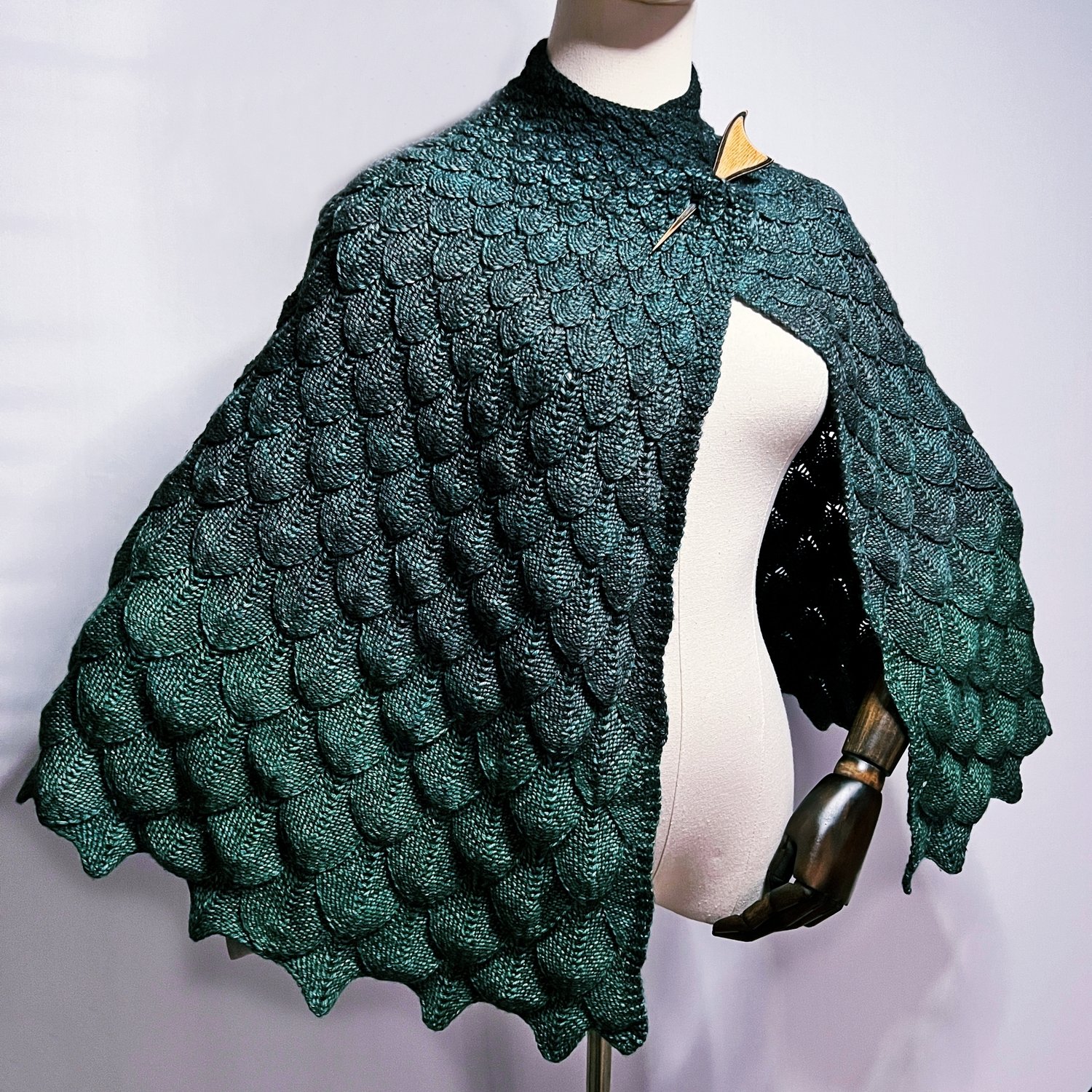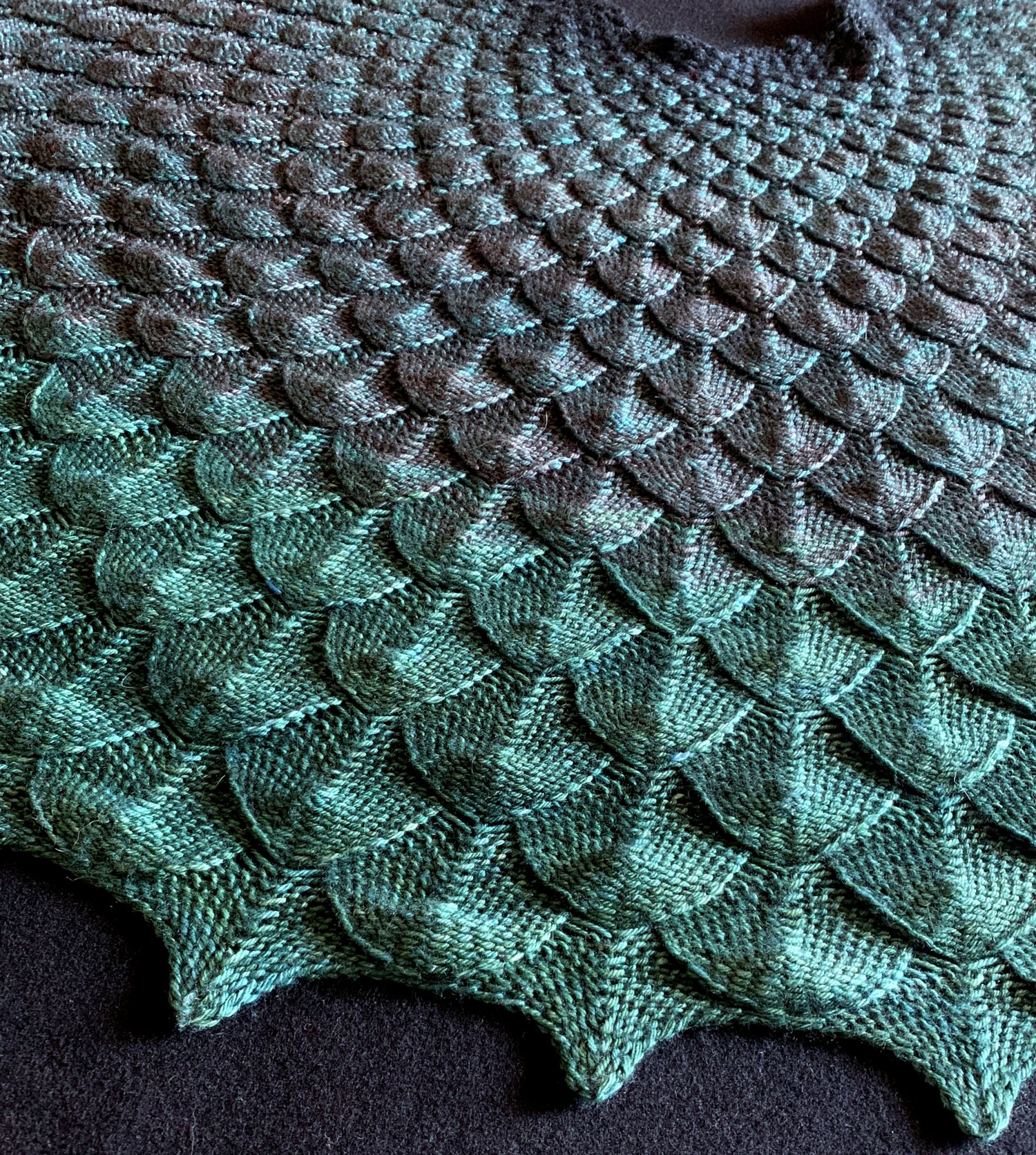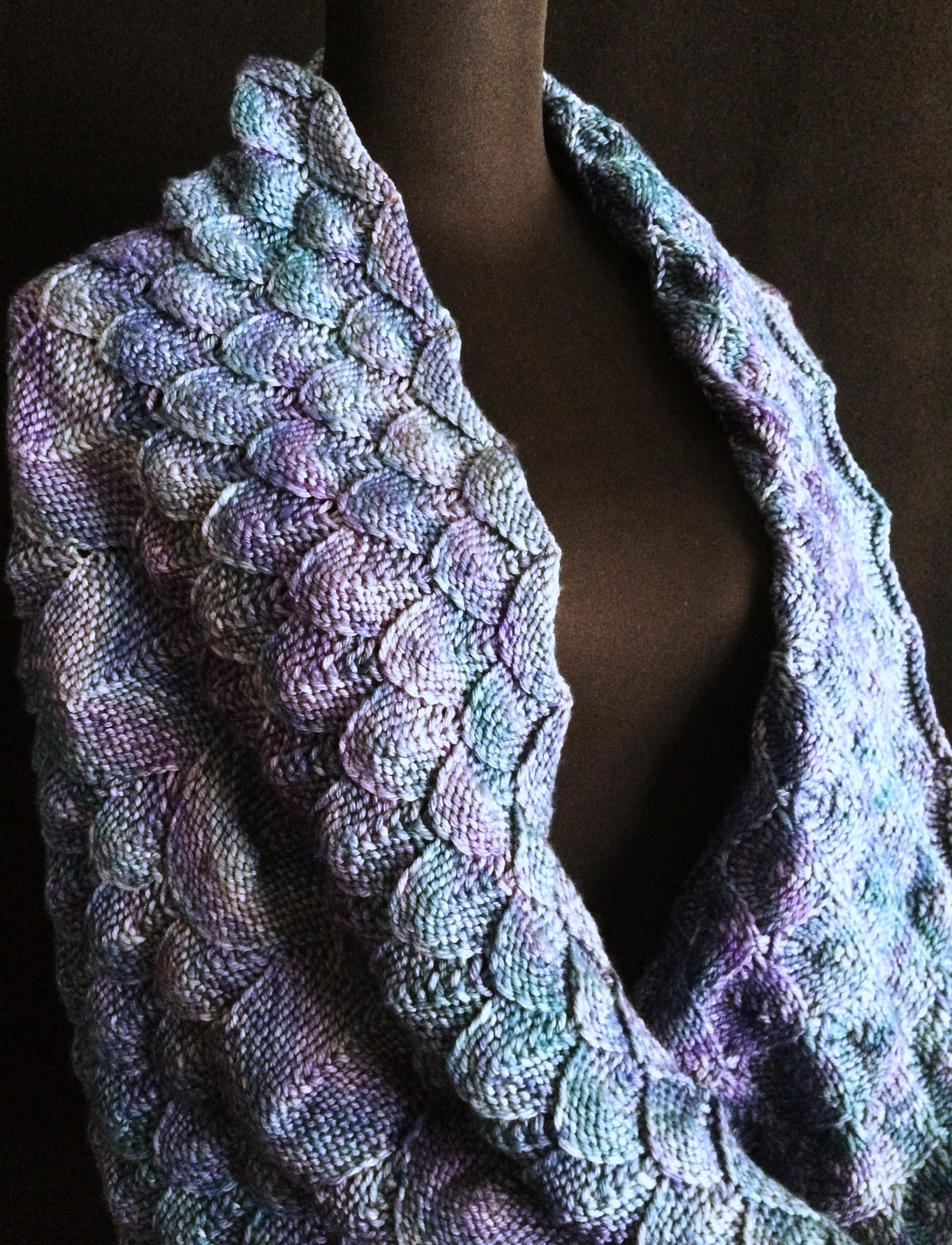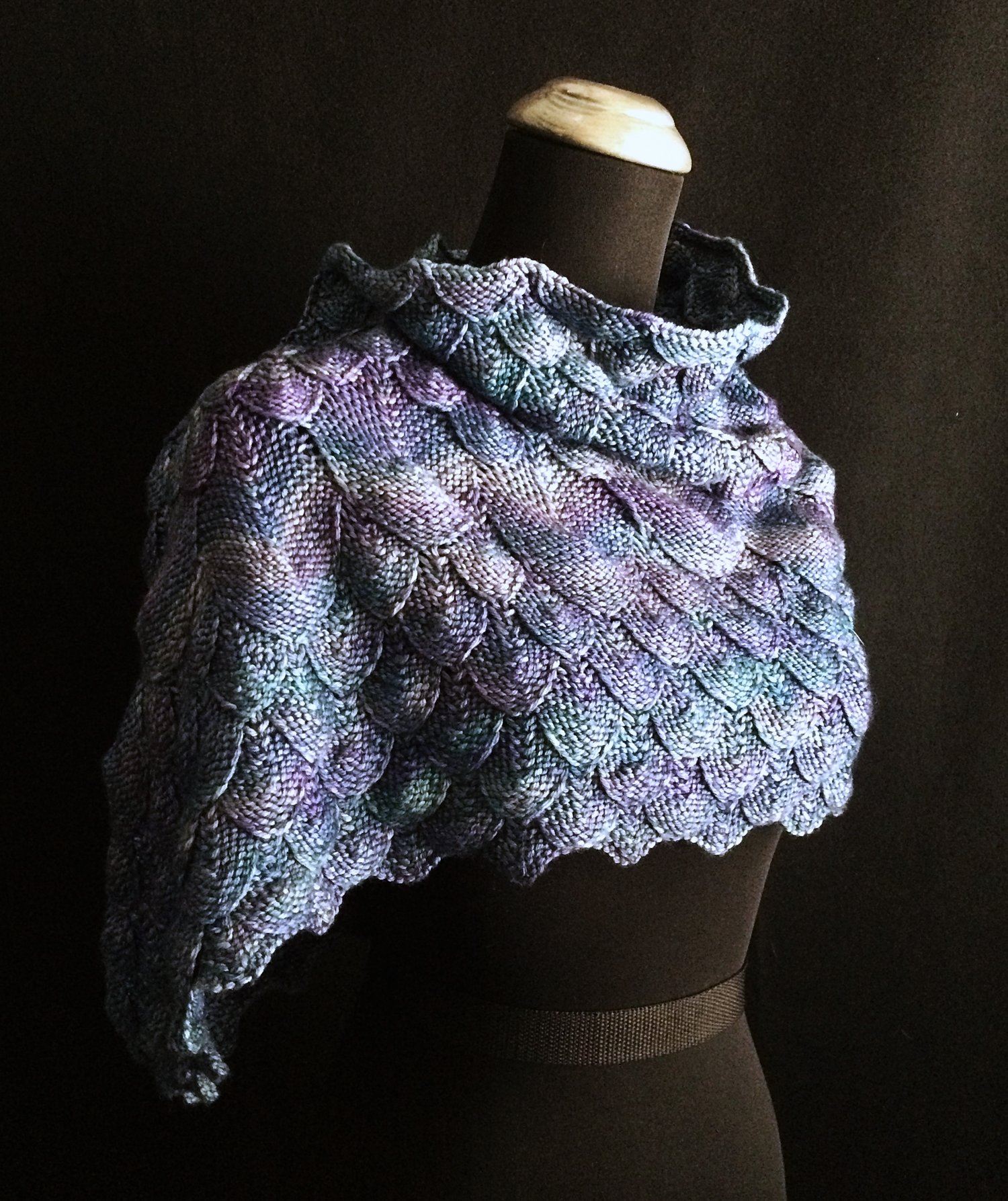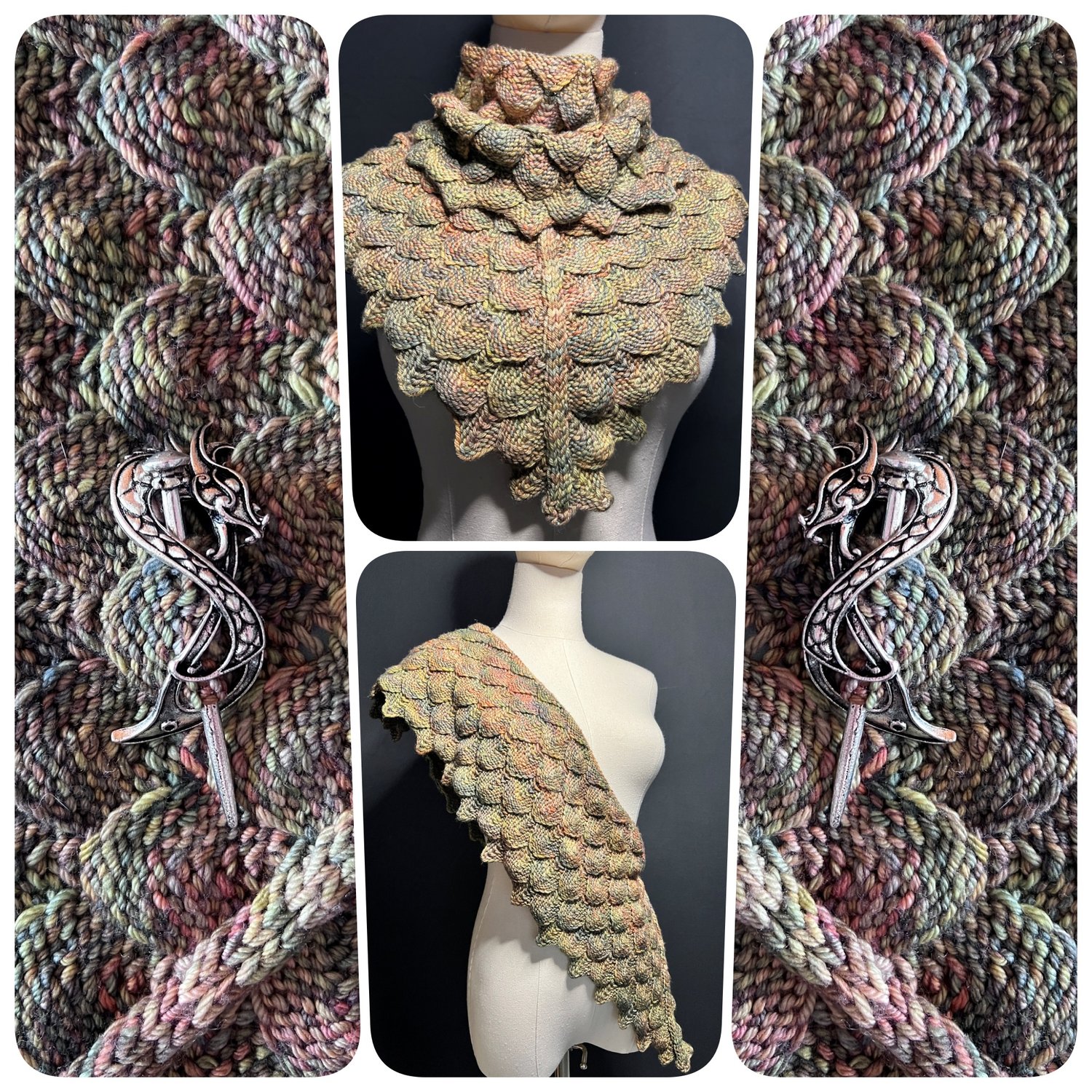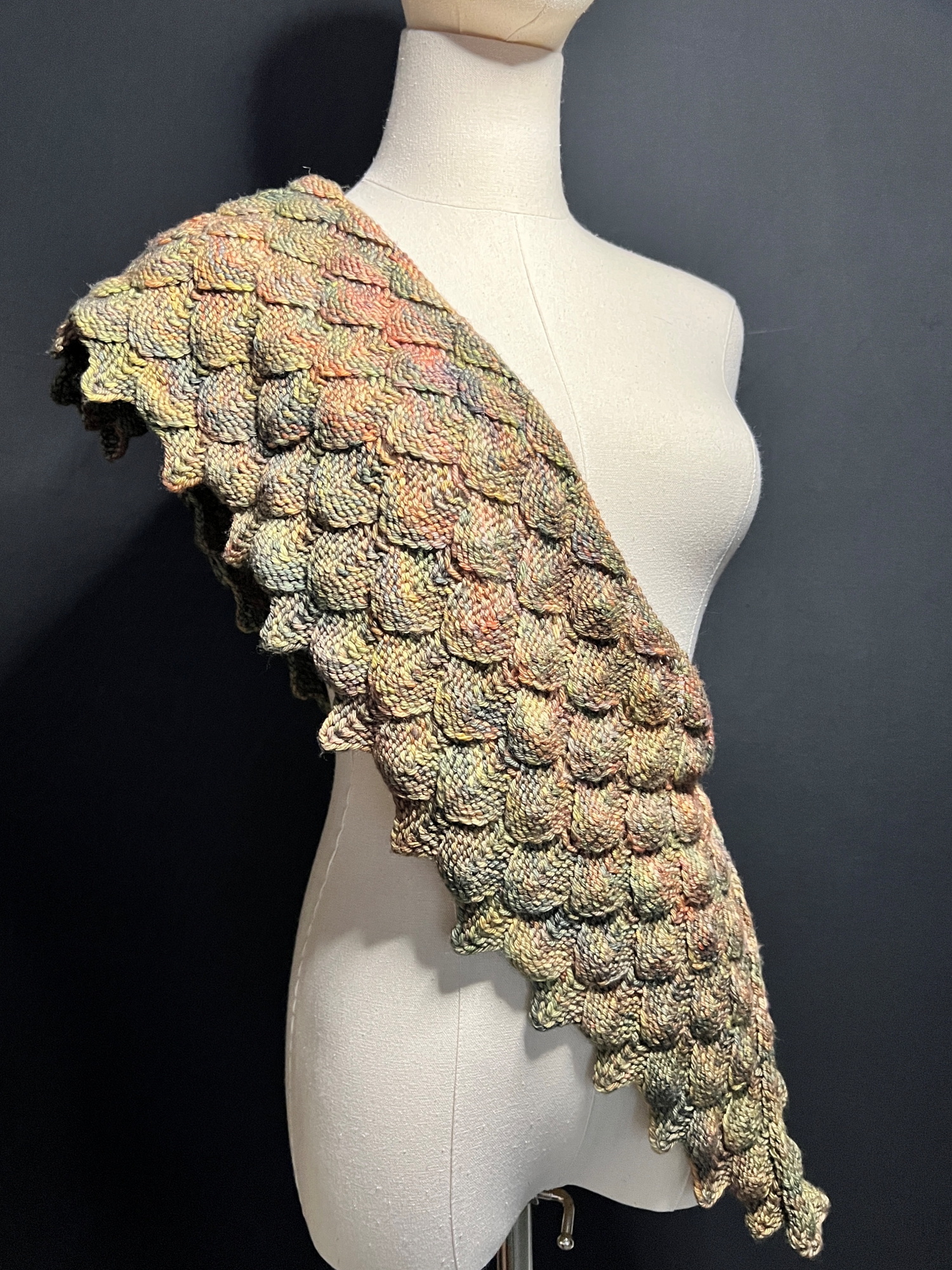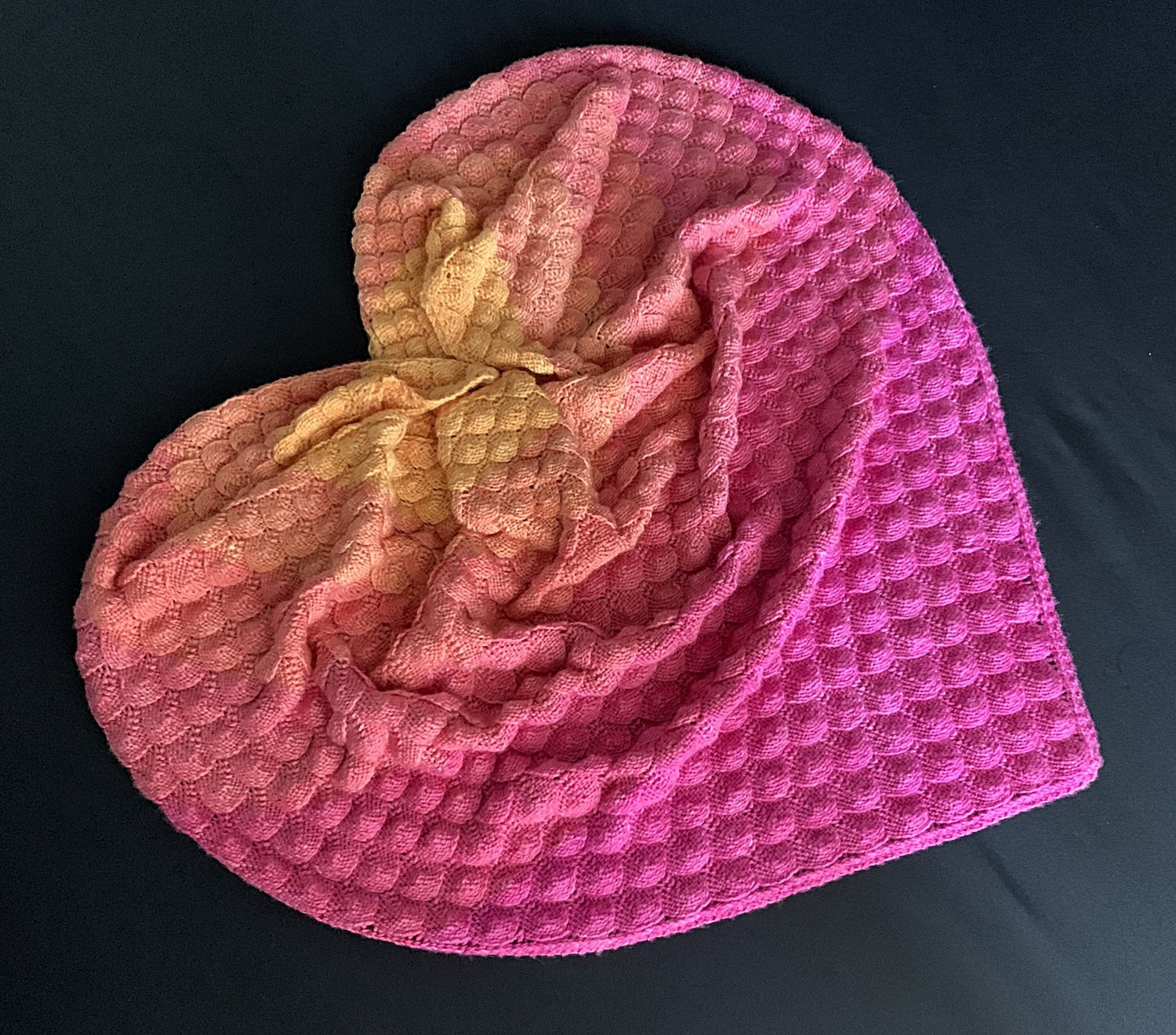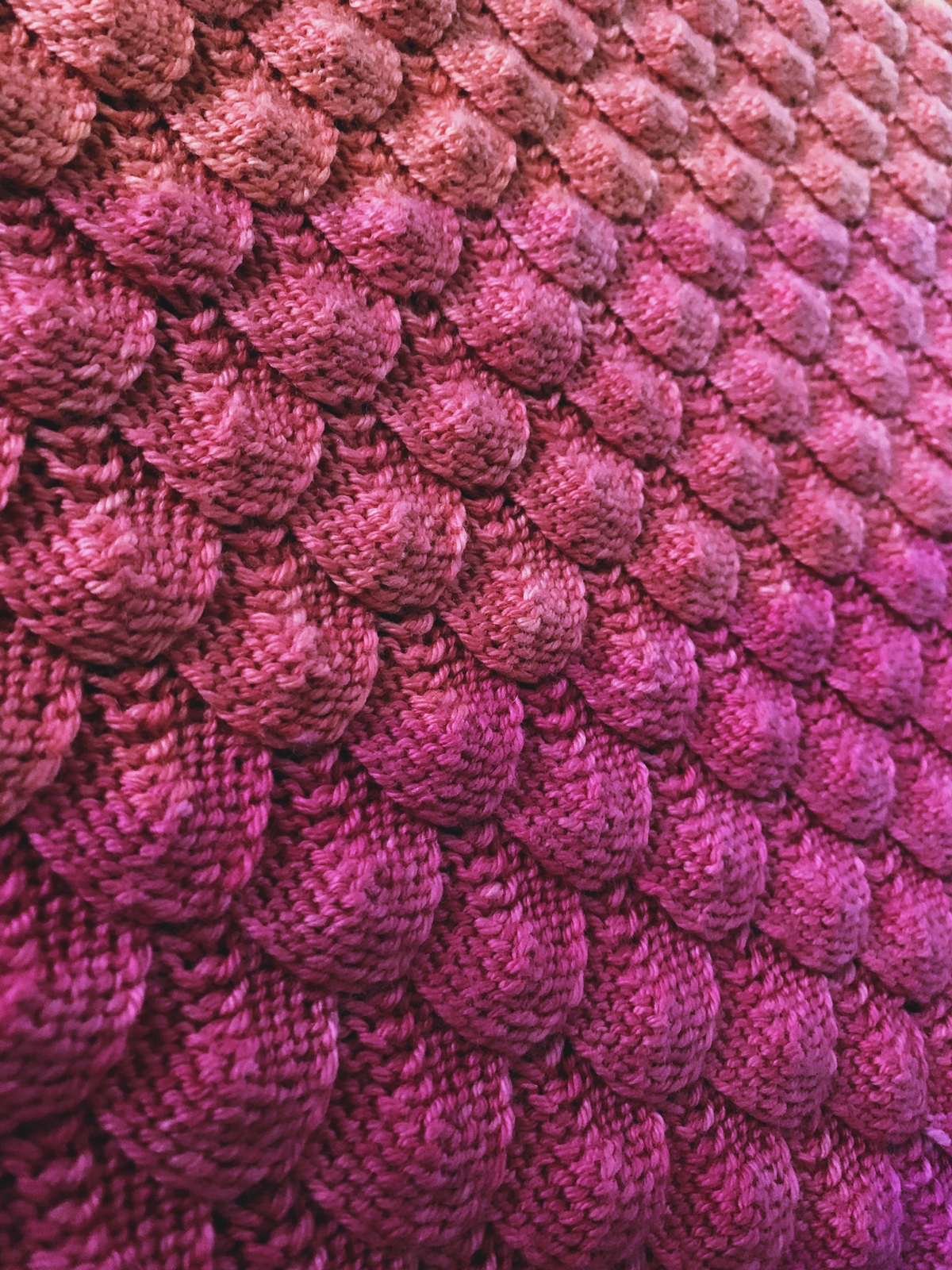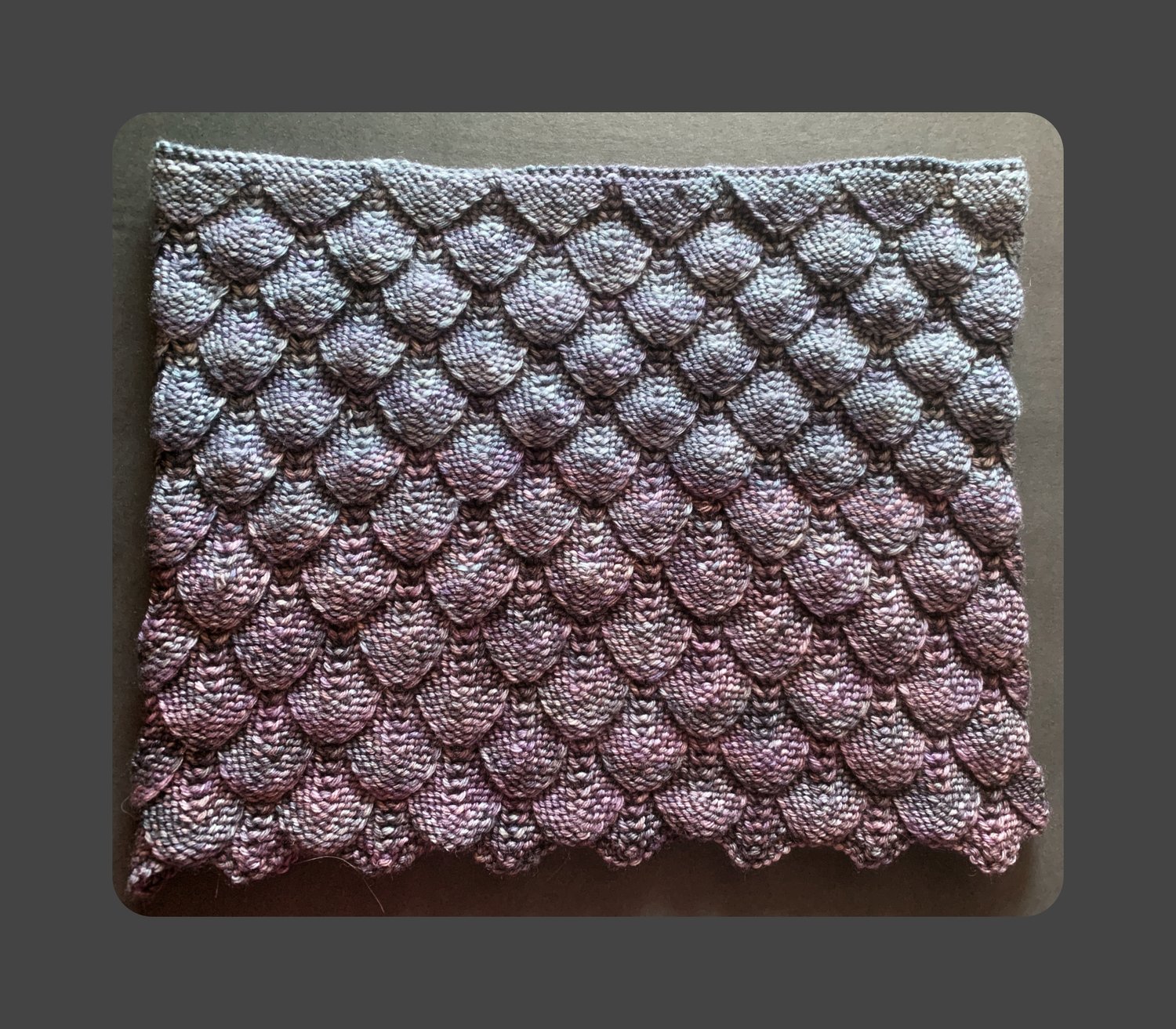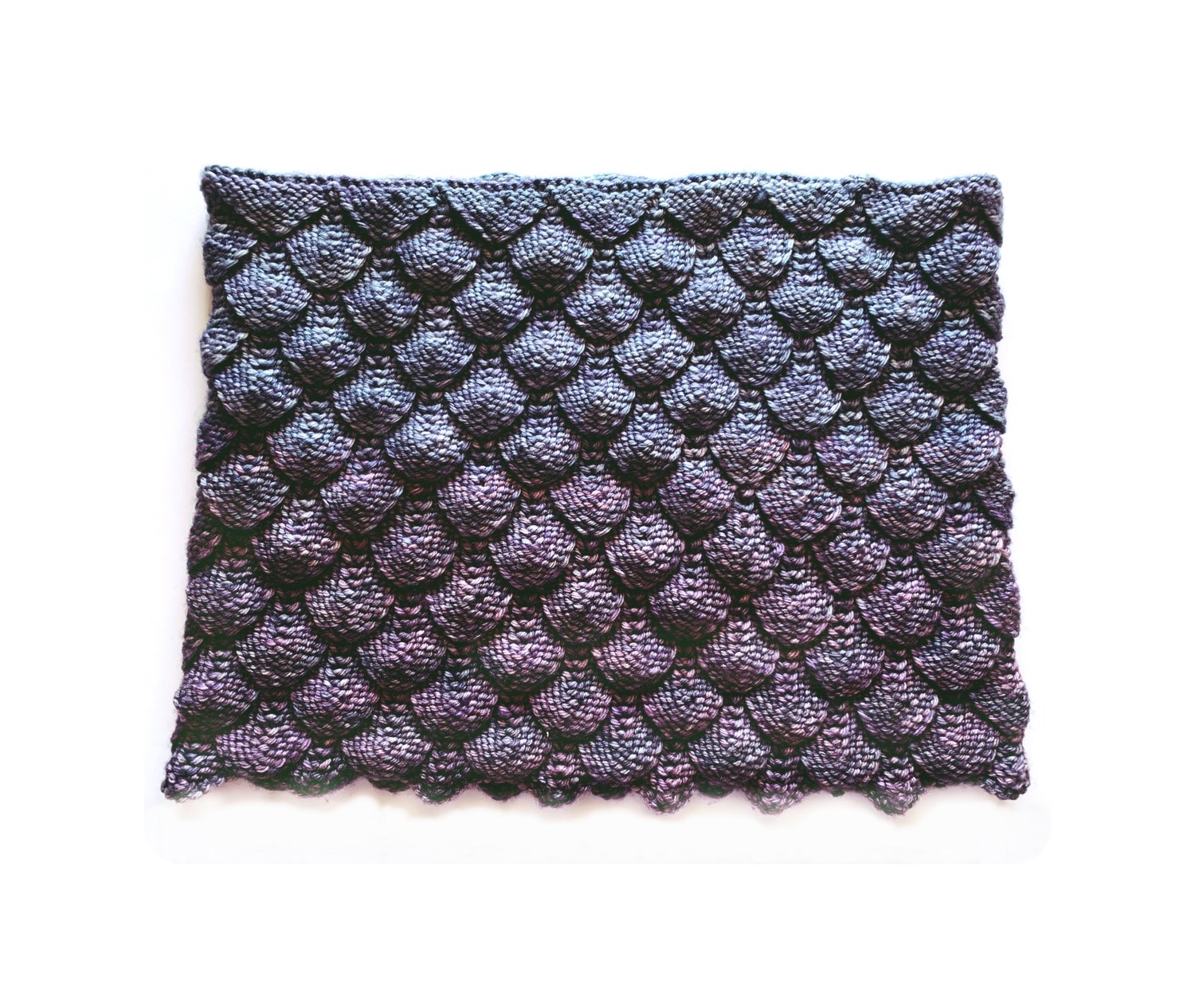Moon Dragon Capelet - Hand Knitting Pattern PDF
On Sale
$6.50
$6.50
Moon Dragon Capelet
’Fit and Flared’ capelet cowl.
Chart reading skills highly recommended, but written instructions also provided. US terms and abbreviations - Glossary and Metrics provided.
Intermediate Lace Skill Level.
Unusual stitch constructions - Directional YO closures and special Inverse CDD. Shifting end of round.
Video Links provided for unusual stitches.
Worked inside out, bottom-up in the round.
No instructions are given for creating gradient effect in this pattern - Sample used a direct color changeover and not a fade technique so when/where is left to knitters choice. See final notes in description for more on creating DIY gradient as seen in the poncho.
Blocking required.
Pattern is written for 1 size. Size adjustments can be made with larger or smaller gauge/needle/yarn
or by adding/subtracting multiples of 12 to CO#.
~Materials~
325 yds (300 m) 165 g Worsted Yarn
@ 210 yds (122 m) per 100 g
~ Sample worked in Malabrigo Rios
100% Merino Superwash and used:
Reflecting Pool (100 g)
& Teal Feather (45 g)
The sample’s color shift was done with ball change not an interval fade.
US 6 (4 mm) Circular Needles
Cord Lengths 16 & 24” (40 & 60 cm)
Or size that gets gauge
Row Counter
Stitch Marker
Blocking Equipment
~ Measurements ~
10.75” (27.3 cm) - neckline to lower point
21” (53.3 cm) Flat - across lower
9.25” (23.5 cm) Flat – across neck
~ Gauge ~
Each large scale 12 x 12 rep measures;
1.4” (3.6 cm) tall x 1.34” (3.4 cm) wide
taken after blocking.
Sts should be snug.
Additional Chattiness…
These scale segments are not only dimensional but overlap a bit and flex like armor plates.
Worked from knit (inner) side… No one wants to work only purls - am I right?
The directional YO closures and the inverse cdd will seem tedious and fiddly at first, like most new techniques. Remember learning cables? But you will get used to them.
You do need to pay attention to your knitting, but it has a logical progression.
Tips to maximize the dimensional effect
1. Use tightly plied, round “springy” yarn.
2. Make a firm fabric/tight sts = smallish needles for your yarn.
3. Snug down the increases and decreases as you work them
’Fit and Flared’ capelet cowl.
Chart reading skills highly recommended, but written instructions also provided. US terms and abbreviations - Glossary and Metrics provided.
Intermediate Lace Skill Level.
Unusual stitch constructions - Directional YO closures and special Inverse CDD. Shifting end of round.
Video Links provided for unusual stitches.
Worked inside out, bottom-up in the round.
No instructions are given for creating gradient effect in this pattern - Sample used a direct color changeover and not a fade technique so when/where is left to knitters choice. See final notes in description for more on creating DIY gradient as seen in the poncho.
Blocking required.
Pattern is written for 1 size. Size adjustments can be made with larger or smaller gauge/needle/yarn
or by adding/subtracting multiples of 12 to CO#.
~Materials~
325 yds (300 m) 165 g Worsted Yarn
@ 210 yds (122 m) per 100 g
~ Sample worked in Malabrigo Rios
100% Merino Superwash and used:
Reflecting Pool (100 g)
& Teal Feather (45 g)
The sample’s color shift was done with ball change not an interval fade.
US 6 (4 mm) Circular Needles
Cord Lengths 16 & 24” (40 & 60 cm)
Or size that gets gauge
Row Counter
Stitch Marker
Blocking Equipment
~ Measurements ~
10.75” (27.3 cm) - neckline to lower point
21” (53.3 cm) Flat - across lower
9.25” (23.5 cm) Flat – across neck
~ Gauge ~
Each large scale 12 x 12 rep measures;
1.4” (3.6 cm) tall x 1.34” (3.4 cm) wide
taken after blocking.
Sts should be snug.
Additional Chattiness…
These scale segments are not only dimensional but overlap a bit and flex like armor plates.
Worked from knit (inner) side… No one wants to work only purls - am I right?
The directional YO closures and the inverse cdd will seem tedious and fiddly at first, like most new techniques. Remember learning cables? But you will get used to them.
You do need to pay attention to your knitting, but it has a logical progression.
Tips to maximize the dimensional effect
1. Use tightly plied, round “springy” yarn.
2. Make a firm fabric/tight sts = smallish needles for your yarn.
3. Snug down the increases and decreases as you work them


